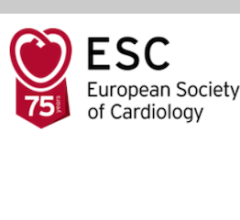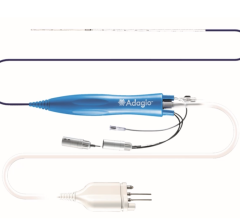
Getty Images
September 2, 2022 — A randomized trial in more than 45,000 men has suggested that cardiovascular screening including cardiac imaging, blood pressure measurement and blood tests, plus treatment if needed, may lower the risk of death, heart attack and stroke in 65 to 69 year-olds. The late breaking research is presented in a Hot Line session at ESC Congress 2022.1 The trial did not meet the primary outcome of reduced mortality in 65 to 74 year-old men.
Professor Axel Diederichsen of Odense University Hospital, Denmark said: “Despite remarkable reductions in mortality from cardiovascular disease, it remains the leading cause of death. More than half of cardiovascular disease is avoidable, meaning that successful prevention has a huge potential to improve public health. DANCAVAS investigated whether screening, including imaging, for seven cardiovascular conditions, and treatment if indicated, could prevent death and cardiovascular disease.”2
Between September 2014 and September 2017, the researchers identified all men aged 65 to 74 years within 15 municipalities in the Southern and Central Regions of Denmark. A total of 46,526 men were randomly allocated in a 1:2 ratio to screening and intervention (16,736 men), or to the usual Danish practice of no screening (control group; 29,790 men). The average age was 68.8 years.
The screening and intervention program included: 1) a cardiac and truncal non-contrast computed tomography to detect coronary artery calcification score above the sex- and age-specific median, aortic and iliac aneurysms, and atrial fibrillation; 2) brachial and ankle blood pressure in both arms and legs to diagnose peripheral arterial disease; and 3) blood tests to identify high cholesterol and diabetes. In case of abnormal findings, prophylactic treatments, including medications and aortic surgery, were offered. Information on medication, surgery, cardiovascular disease and death after five years of follow up was obtained from national registries.
The primary outcome was all-cause mortality. The secondary outcomes were stroke, myocardial infarction, amputation due to vascular disease, aortic dissection, and aortic rupture. Outcomes were compared between the two groups using the intention-to-treat principle. During a median follow up of 5.6 years, 2,106 (12.6%) men in the intervention group and 3,915 (13.1%) men in the control group died, corresponding to a non-significant 5% relative risk reduction (hazard ratio [HR] 0.95; 95% confidence interval [CI] 0.90–1.00; p=0.062). The number needed to invite to screening to prevent one death was 155. When the effect of the intervention on mortality was analysed according to age, there was no difference among men aged 70 years and older (HR 1.01; 95% CI 0.94–1.09; p=0.747), but an 11% decreased risk in those aged 65 to 69 years (HR 0.89; 95% CI 0.83–0.96; p=0.004).
In a post hoc analysis, the intervention reduced the risk of a composite endpoint of death, stroke or myocardial infarction by 7% in the overall population (p=0.016), with an even greater reduction of 11% in those aged 65 to 69 years (p=0.007).
Regarding secondary outcomes, 1,169 (7.0%) men in the intervention group had a stroke compared with 2,228 (7.5%) in the control group (HR 0.93; 95% CI 0.86–0.99; p=0.035). There were no differences between the two groups in myocardial infarction (HR 0.91; 95% CI 0.81–1.03; p=0.134), amputation due to vascular disease (HR 1.05; 95% CI 0.80–1.38; p=0.711), aortic dissection (HR 0.95; 95% CI 0.61–1.49; p=0.827), or aortic rupture (HR 0.81; 95% CI 0.49–1.35; p=0.420).
As for prophylactic treatments, antithrombotic agents (22.9% versus 8.3%; HR 3.12; 95% CI 2.97–3.28; p<0.001) and lipid lowering agents (20.7% versus 9.0%; HR 2.54; 95% CI 2.42–2.67; p<0.001) were prescribed more frequently in the intervention group compared with the control group. There were no differences in prescription of anticoagulants, antihypertensives or antidiabetics. Elective aortic aneurysm repair was more common in intervention group (1.5%) compared with the control group (1.2%; HR 1.29; 95% CI 1.07–1.48; p=0.006).
Professor Diederichsen said: “We observed a substantial reduction in the combined endpoint of death, stroke or myocardial infarction in elderly men by comprehensive cardiovascular screening. Our results point quite firmly at a screening target age below 70 years.”
For more information: www.escardio.org
References and Notes
1DANCAVAS will be discussed during:
Hot Line Session 2 on Saturday 27 August at 08:30 to 10:00 CEST in the Barcelona auditorium.
Meet the Trialist – DANCAVAS on Saturday 27 August at 11:00 to 11:20 CEST on the ESC TV Stage.
2Diederichsen ACP, Rasmussen LM, Søgaard R, et al. The Danish Cardiovascular Screening Trial
(DANCAVAS): study protocol for a randomized controlled trial. Trials. 2015;16:554.


 August 29, 2025
August 29, 2025 









